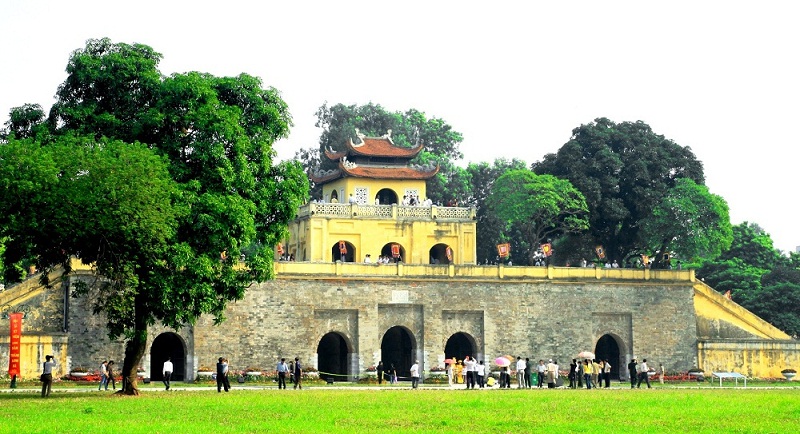
The year of 2020 marks the tenth year since UNESCO honored the Thang Long Imperial Citadel as a world heritage site.
The construction of the Imperial Citadel of Thang Long finished in 1011 after King Ly Cong Uan moved his kingdom’s capital from Hoa Lu in Ninh Binh province to Thang Long- now Hanoi city. The massive architectural work, which had later been fortified by successive feudal dynasties, plays an important role in the system of Vietnamese historical monuments. |
The citadel opened its doors to visitors for the first time in 2004 and became a special cultural event attracting the attention of thousands of people of the capital and the country as well as international tourists. |
From 2002 to 2003, a massive archaeological excavation was conducted at 18 Hoang Dieu (the present gate to the Thang Long Imperial – the location which years earlier was garrisoned by the army) revealed an extremely valuable relic complex, affirming the existence and longevity of the Thang Long Imperial Citadel through a thousand years. |
Since 2004, the Ministry of Defense has gradually handed over the Ancient Citadel relic to Hanoi. |
On August 1, 2010, the World Heritage Committee in Brasilia (Brazil), recognized the Thang Long Imperial Citadel as a world cultural heritage. |
A decade since the heritage site was honored by UNESCO, the work of preserving the heritage value of the Imperial Citadel of Thang Long has been implemented synchronously and methodically, according Mr. Tran Viet Anh, director of the Thang Long Heritage Conservation Center. |
The Thang Long Heritage Conservation Center already approved the detailed planning on conservation, embellishment and promotion of the ancient citadel relic area. In addition, the Center has formulated a project on overall conservation of the heritage site; as well as did a research on restoration of palaces and other royal ceremonies. |
Hanoi People's Committee Chairman Chu Ngoc Anh emphasized that Hanoi is a city with a long history, a place of convergence, crystallization and diffusion of national cultural values. Enduring historical upheavals, Hanoi still preserves in itself valuable historical and cultural relics, including the Thang Long Imperial Citadel. |
Over the past 10 years, in implementing the government's commitments to UNESCO, the People's Committee of Hanoi has focused on leading the Thang Long Heritage Conservation Center on preserving and promoting the value of the heritage, Mr. Ngoc Anh told a ceremony on November 23. |
In the next phase, Hanoi will continue to make more efforts in calling for domestic and international cooperation to bring the unique value of this world heritage into full play, strengthening activities of sustainable tourism development, effectively contributing on the process of building a wealthier and more beautiful capital, Mr. Ngoc Anh said. |
Children enjoy the cultural space at the Imperial Citadel of Thang Long. |
During the years, Hanoi has made a great effort in preserving and promoting the values of the heritage through the organization of many exhibitions related to the site. |
A cultural activity held in the Thang Long Imperial Citadel |
Visitors at the Thang Long Imperial Citadel |
Hanoi plans to turn the Thang Long Imperial Citadel into a long-term preserved historical park, a leading tourist attraction of the capital and the country. |
| The heritage along with other UNESCO titles are contributing to creating a proud cultural profile of Hanoi, enhancing the national image of Vietnam in general and Hanoi in particular. |






- Magnificent Liberation Day decorations in downtown Hanoi
- Locals in joy over the launch of Vietnam's second metro line
- Red blossoms light up Hanoi's river
- Pristine white lotus enchants flower lovers in Hanoi
- Purple Lagerstroemia flowers grace Hanoi streets
- Vietnam holds parade to mark 70th anniversary of Dien Bien Phu victory
















